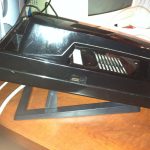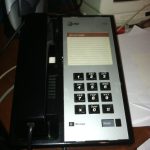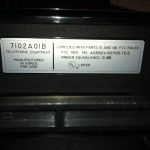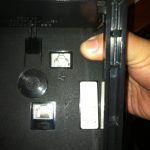Today’s Phone of the Day is a retake of the CallMaster IV terminal for the use of Avaya enterprise grade PBX systems. These are not telephones, and they are not attendant consoles and while there is an apparent resembelence of the Call Director, these sets would not be used for “answering centers” since Voice mail had taken many of those roles anyways.
Lucent
POTD: Artsy photo of an Avaya 302B Attendant Console
Telephony 101: On Voice Mail
Some people love voice mail, many just hate it. Many are apparently so egotistical, they think it’s not worth listening to 2 minutes of a voice based message than a generic email.
People also think email is better, but do you know the history of voicemail?
if the answer is no, lets go down memory lane of Voice Mail.
Voicemail is often assumed to be an electronic answering machine on a server. While it’s true, its origins was almost similar to sending a letter or an email, just with spoken word.
The first indication of such language was in printed publications in 1877. A famous man named Thomas Edison with an invention called the phonograph. For the Gen-X audience and older, this is basically a record player. Millenials are probably familiar to just be cool for the latest trend. While it was well known for songs, the ability to record spoken word, as a way to replace letter writing had the possibility. The “voice mail” language was in the lexicon by the 1910s.
While the answering machine was invented in the 1960s, the ability to install these would be so cost prohibitive, and worse, a wiring nightmare. In the early 1970s, Motorola introduced pagers that provided one way voice messages that would be answered by an “answering center” (this in 2017 is completely archaic with the advent of digital telephony, automated attendants, in fact the size of these answering centers were the size of contact centers, which was not existent at the time.) These pagers used UHF signals and were often used for volunteer fire fighters, etc. In this sense, this could be considered as a voice message.
POTD: Local Books-A-Million
This was taken recently at a local Books A Million. I first heard of them when I traveled to D.C. in 2002. They took over the space once held by Borders since they went bankrupt around 2009, specifically I am not sure because I do not frequent Concord.
My Collection – AT&T (Avaya) 7102 Analog Voice Terminal
Here is another private collection of another office telephone. It’s an AT&T (now Avaya) 7102 Analog telephone.
These were made by AT&T in the mid to late 80s, sports the “R” handset (Merlin style) while having a basic featureset with a 12 digit dial pad and a “Recall” (read: Flash) to use additional features of the PBX or “Call Waiting” as this terminal can – in fact – be used for residential landline services.
In fact, the ringer is much like the very old AT&T 1810 digital answering machine/house phone I had at my family’s house. It doesn’t have the sound of the digital telephones unfortunately.
I bought this on eBay a while back, and here is the gallery





It was made in Korea, kinda odd for phones to be made out of the States at that time. Maybe this was built in the same plant as the other consumer phones that AT&T continued to produce leading to the spinoff to Lucent in 1996. I opened the phone and the guts looked like a cheap Asian produced device.
This phone however, is a shell of a BIS-10 (or a 7410 Plus), take the DESI paper off, and you’ll see the empty spots for those buttons. It was kinda surprising to see, but I guess since there was a membrane cover, it didn’t matter. I’ll post that picture (and redo the picture gallery in a neater workspace) at a later time.

